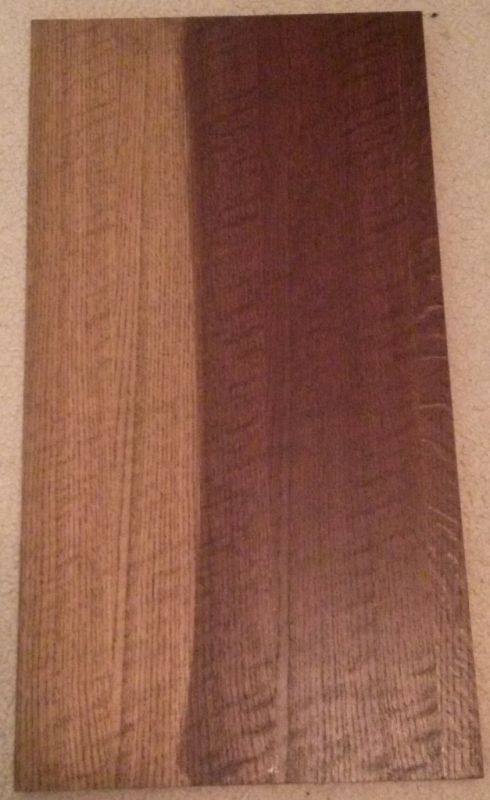Question (WOODWEB Member) :
I created this sample by first staining with SW Oil Classic Stain and then going over it with a transtint dye dissolved in water about two hours later. On both hardwood and plywood samples the waterborne dye didn't raise the grain seemingly because there was still oil in the pieces not letting the water penetrate. With a lacquer topcoat the sample is a near perfect match to a mantle I'm trying to match an entertainment center to. I've never used dyes before and to my understanding, normally I would dye the wood first to even the color and then stain if necessary. I'm not really worried about uneven coloring or blotching, the wood is rift sawn red oak with no dramatic color differences, but I am wondering is there any reason not to do this? I could mix the dye with DNA, but would rather not have the extra expense and was worried it may wipe off the stain or cause it to streak and I don't want to spray it on.

Forum Responses
(Finishing Forum)
From contributor K:
From the photo it looks like you wiped on the die (assuming the dye is on the right and the wiping stain is on the left). Be careful with this, dyes donít handle like wiping stain. If you rub back across a spot youíve already wiped the color will darken quickly on the overlaps. I always spray dye and I use acetone as my vehicle. The S61 dye concentrates from Sherwin Williams are excellent. You can do it either way (stain first then tone with dye, or dye first then wipe stain). I always prefer spraying dye first. In most cases I can achieve the color Iím looking for with the dye alone. Very rarely do we have to wipe stain.